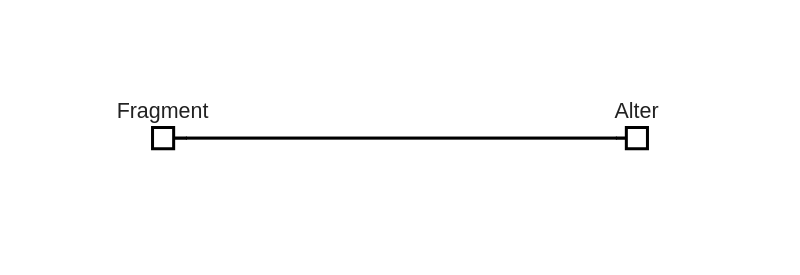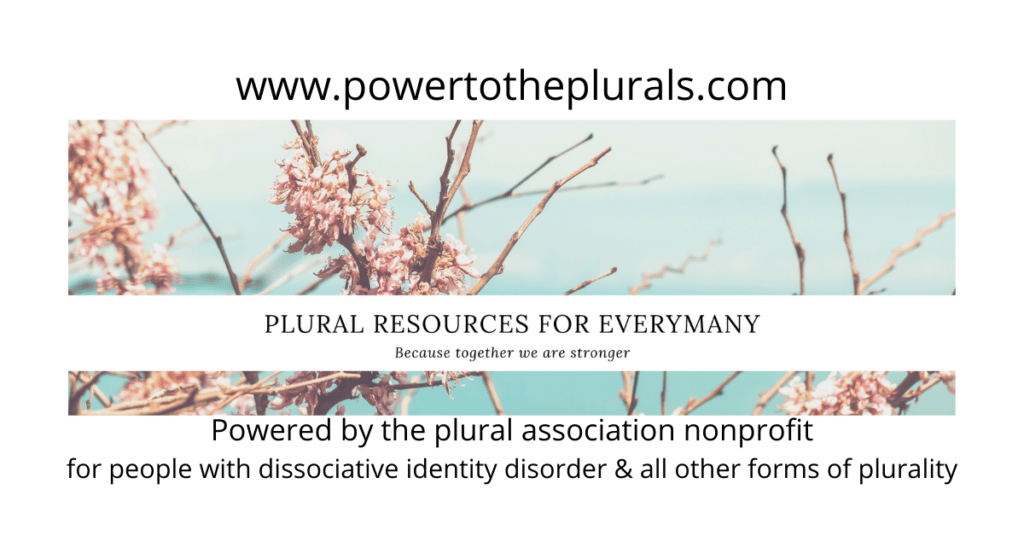|
TPA audio player
|

Last week’s article was all about alters. This week we look at the difference between alters and fragments in dissociative identity disorder (DID) and other specified dissociative disorder (OSDD) .
The book the haunted self teaches us where the word fragment comes from;
Braun in 1986 suggested a sort of spectrum, with at the one end a very limited emotional part that contains a small aspect of a traumatic experience (which he referred to as a “memory trace fragment”), and much more complex emotional part’s at the other. He described a very limited emotional part as “a fragment that has only a minimal set of response patterns to stimuli, life history, and range of emotion/affect but has knowledge for a short period of time”
Table of Contents
Fragments vs alters:
Fragments are just as valid as alters, they are not and should not be any less. They are just at a different place on the spectrum as you or other alters are. They are under developed as an individual or leck personality traits in general and might come across flat and/or 2D. They often do not have enough life experience to have developed into a fully developed alter. Fragments might always experience the same emotion or always perform the same task. They might also have a specific purpose during trauma. Fragments are also great memory holders. They can hold a smell, sound, taste, feelings or what they saw and observed. This is why it is so important to invite all parts, including all fragments to work together when addressing trauma, to be really able to integrate the memory. So multiple fragments can hold one traumatic memory. It is also said that fragments are easier to integrate then alters, if one is interested in that.
OSDD might have more fragments then alters. This is because it is said that often OSDD has only one apparently normal part and next to that mostly emotional parts. (coping with trauma related dissociation) Emotional parts are more often fragments. Hence OSDD might experience more fragments then alters.
We love to hear if and how you experience fragments in your system.
Join the discussion. To really engage and learn from each other we invite you
to join our Power to the Plurals Facebook group.
This is also where you can find The Stronghold System (Sarah Clark) and TheMyriad System (Ashton Parker) personal experience with the topic we discuss.
We hope for active interaction between members of the group.
The Plural Association NonProfit depends on community support. Please consider donating towards the empowerment of plurals, so we can continue our important work. Donations can be made here: thepluralassociation.org/donate
About the authors
The Stronghold System are the proud volunteer founders & CEO of The Plural Association Nonprofit. They are from the Netherlands and reside in a 30-something-year-old body, are nonbinary, parents of an amazing child & 3 cats. They got diagnosed with Dissociative Identity Disorder over 10 years ago & also self ID as Plural.


I have a character who has O.S.D.D named Roxy Schelly. He has an Emotional Fragment I call Roxy (in the Third Person.)
Because I have a hard time talking about him because he’s not Roxy although he goes by the same name.
I don’t have D.I.D. or O.S.D.D., so I’m not sure if Fragments are always difficult to explain.
Good post! We are linking to this great content on our site. Keep up the good writing.
I have OSDD. I have 2 fully differentiated alters, and 3 fragments. I have a male alter and a female alter (the body is female). The fragments have names and I know how they look and they’re general personality, but they aren’t much more developed than that. I have one that’s a little version of me (female) from before the trauma began. The other 2 fragments are male. They are a trauma free male version of me (the host), and a very dark male version of me that holds a lot of the trauma and he used to harm the body. He’s very emotional. The fragments come through more as influences or feelings that don’t seem like they’re 100% mine. Like, if I see a toy that my little really likes, I get very excited and kid-like for a few minutes. I’m not sure if that’s a good way to describe it or not, but that’s my experience with my fragments.